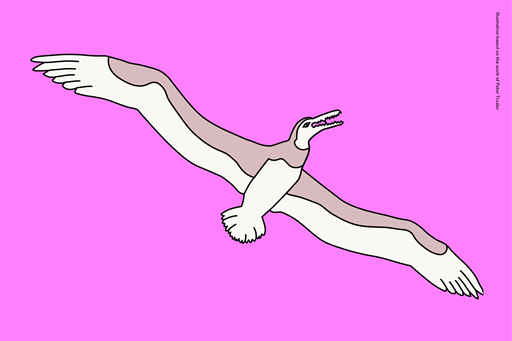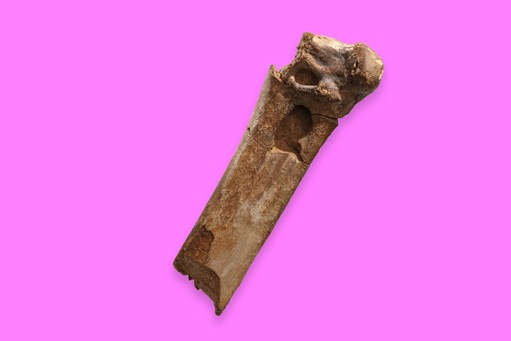6. Pelagornis
Giant toothed bird of Bayside
Pelagornis was an ocean-going bird, with a wingspan twice the size of a living albatross – 6 metres wide. Its lineage roamed the world’s skies from just after the extinction of the dinosaurs until about 2.5 million years ago. It captured prey in a beak over 30 cm long that was studded with spiky projections of bone that provided the same function as teeth.
Most fossils of Pelagornis worldwide are found in rocks that once formed on the floor of shallow coastal seas. Along the southern coast of Victoria, including inside Port Phillip, the oceans of the past 25 million years are preserved in rock layers. The 5-million-year-old fossils of Pelagornis from bayside Beaumaris, Victoria were discovered more than 150 years after it was first named and proved this bird had a worldwide distribution.
About the animal
|
Scientific name |
Pelagornis |
|
How do you say its name? |
Pell-uh-GORE-niss |
|
How big? |
Its wingspan in life was likely more than six metres — far wider than birds alive today. |
|
When did it live? |
The Victorian Pelagornis lived here 5 million years ago. |
|
What did it eat? |
Fish or squid |
Fossil facts
|
Significant Victorian location |
Beaumaris, Port Phillip |
|
Traditional Owners |
|
|
Who named it? |
French palaeontologist Édouard Lartet (1801-1871) |
|
Who found it? |
Pelagornis fossils have been found at Beaumaris by keen-eyed members of the public |
|
What is special about it? |
Bony projections formed ‘teeth’ along the beak of Pelagornis. |
|
Significance of the fossil |
Fossils from Beaumaris, Victoria are the only fossils of these birds in Australia and show that Pelagornis visited every continent on Earth. |
|
Full name and meaning |
Pelagornis simply means ‘ocean-going bird’. |








